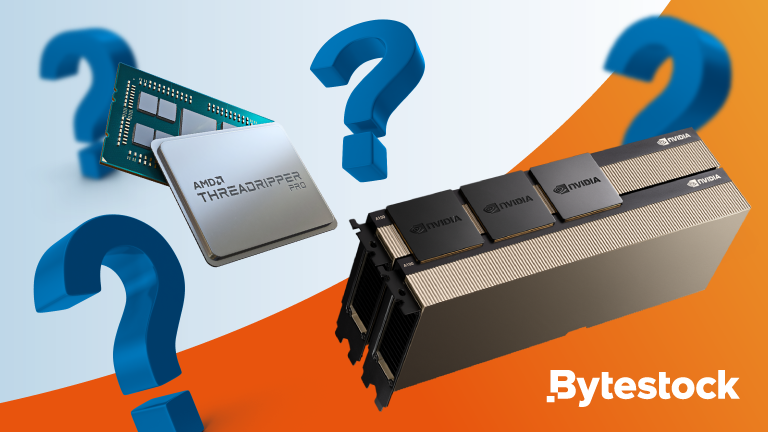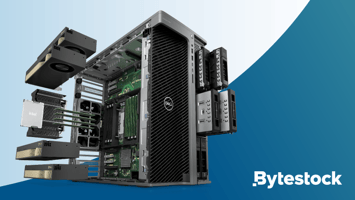A CPU (Central Processing Unit), or simply ‘processor’, is the core component of any computing...
Understanding the CPU and GPU: What's the Difference

CPU Components
The CPU runs with three essential stages: fetch, decode, and execute. These stages process instructions from both the user and active software programs, performing essential arithmetical, logical, and input/output operations. Below are the key components of a CPU.
Arithmetic Logic Unit, also known as ALU: Performs arithmetic and coherent calculations. The calculations are powered by billions of microscopic transistors acting as tiny gates that control the flow of electricity, processing binary information in the form of ones and zeros.
Control Unit (CU): Manages the device's components, interpreting instructions from RAM and converting them into signals that activate other components.
The Cache: Enables the quick exchange of data within the CPU. It ensures that data is efficiently organised and accessed in different levels of memory, which are structured in a hierarchy.
Situated on the motherboard, the CPU requires its own cooling system, typically a fan, due to the significant heat it generates.
The Role of the GPU
Complementing the CPU's role, the graphics processing unit (GPU) is compared to the creative side of the brain. Many CPUs include integrated GPUs that handle basic graphics tasks, but a dedicated GPU is required for more intense graphics-based tasks, such as video rendering, high-end software design, and machine learning. The GPU breaks down complex graphics problems into thousands or millions of tasks, solving them simultaneously and ensuring seamless graphics rendering.
Both CPUs and GPUs share several similarities:
Silicon-Based Microprocessors: Both are constructed from silicon and other semiconductor materials, forming the backbone of modern computing hardware.
Data Handling: Both CPUs and GPUs are essential for processing and managing data, and executing complex computations required by various software applications.
Critical Computing Essentials: They are indispensable components of a computer system, each playing a unique and crucial role in overall performance.
Microarchitecture: Both CPUs and GPUs have intricate microarchitectures that are designed to maximise performance and efficiency.
Integration in Modern Devices: Both are found in a wide range of computing devices, from desktops and laptops to servers and mobile devices.
Performance Enhancement: Advancements in both CPU and GPU technologies continually push the boundaries of what is possible in terms of speed, power efficiency, and capabilities.
Despite these similarities, CPUs and GPUs have distinct architectures designed for different purposes.
Explore our extensive range of components and uncover what you've been missing to elevate your computer's performance.





-1.png?height=200&name=MicrosoftTeams-image%20(21)-1.png)
